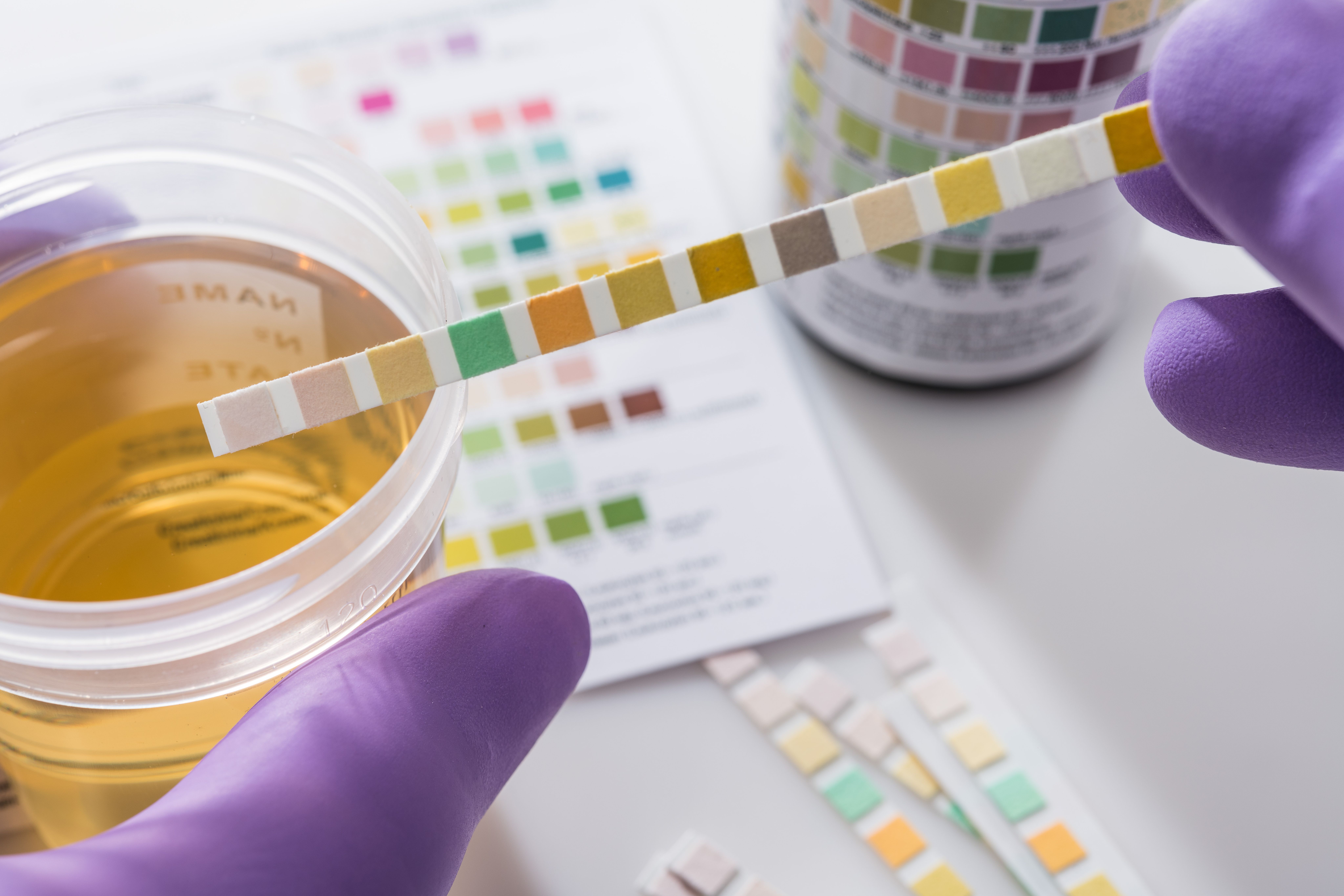Reflecting on Ion Chromatography and Urine Analysis
Urine analysis, or checking the appearance and content of urine, is a medial process that involves ion chromatography (IC). In a recent study published in the Journal of Chromatography A scientists from the China University of Geosciences, reviewed the different uses for IC in urine analysis that have developed over the past few decades (1).
urine test strips in purple gloves | Image Credit: © Lothar Drechsel - stock.adobe.com

Urine is an effective way to monitor health because it is non-invasive, easy to collect, and immediately available. The urine matrix is complex compared to other aqueous solutions because it can contain multiple compounds like ions, proteins, and microorganisms that can influence the ions. Using ion chromatography (IC), therefore, is a very complex procedure itself, typically involving considerations of sample pretreatment, IC separation column selection, eluent composition, detector selection, post-column derivatization, and their combinations. Furthermore, even more methods have been developed and made commercially available over the past few decades. Organic matter in urine influences how inorganic ions behave, and because of this, scientists must eliminate organic acids and bases to ensure accuracy. This usually means that urine samples are diluted and filtered prior to detecting compounds such as drugs or pesticides. This also facilitates the accurate and sensitive analysis of ultra-trace components.
These IC advancements in urine analysis hold a good deal of potential in shaping the development of further medical diagnoses. According to the researchers, “By harnessing the advantages of IC, researchers and clinicians can uncover valuable insights into the presence and levels of various chemicals in urine, contributing to improved understanding, diagnosis, and monitoring of various health conditions” (1).
Reference
(1) Pang, J.; Huang, Y.; Liu, Y.; Huang, W. Applications of ion chromatography in urine analysis: A review. J. Chromatogr. A. 2023, 1706, 464231. DOI: https://doi.org/10.1016/j.chroma.2023.464231







